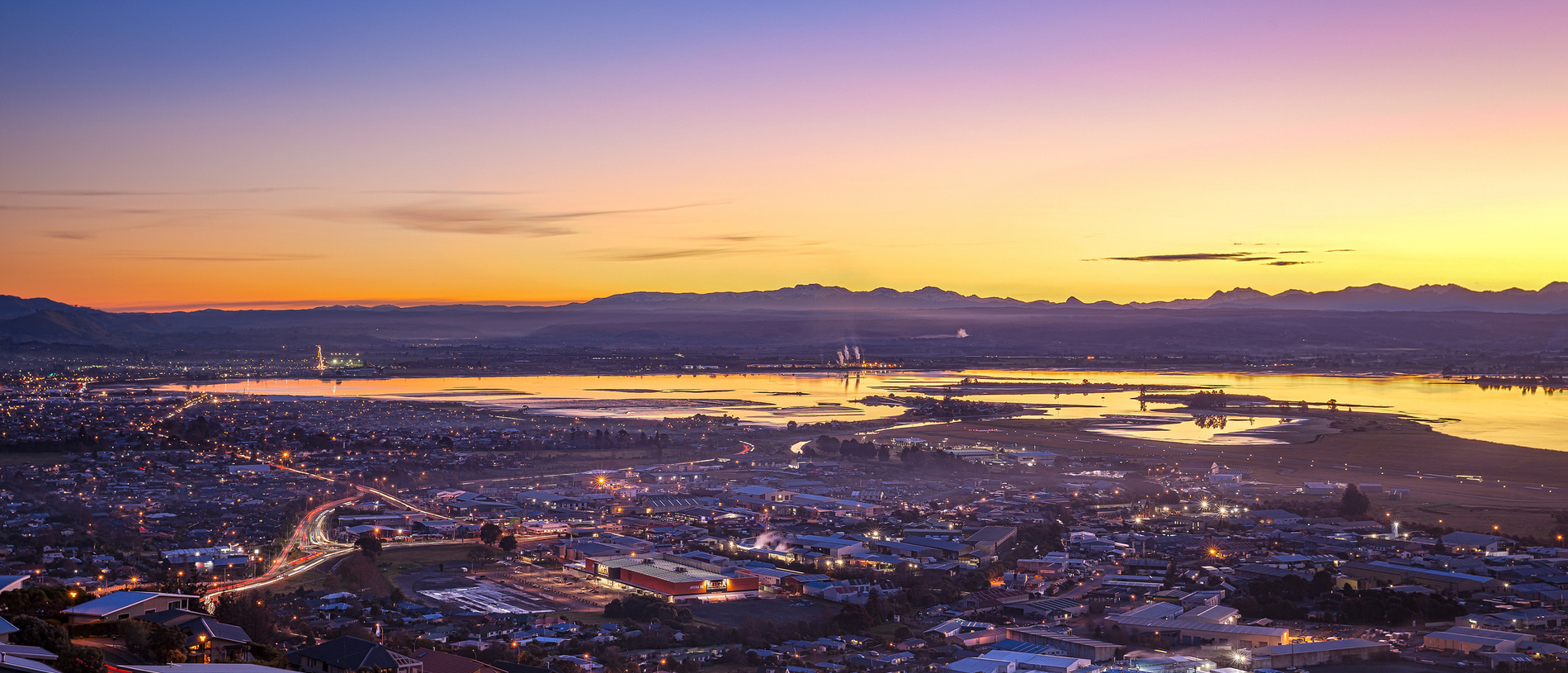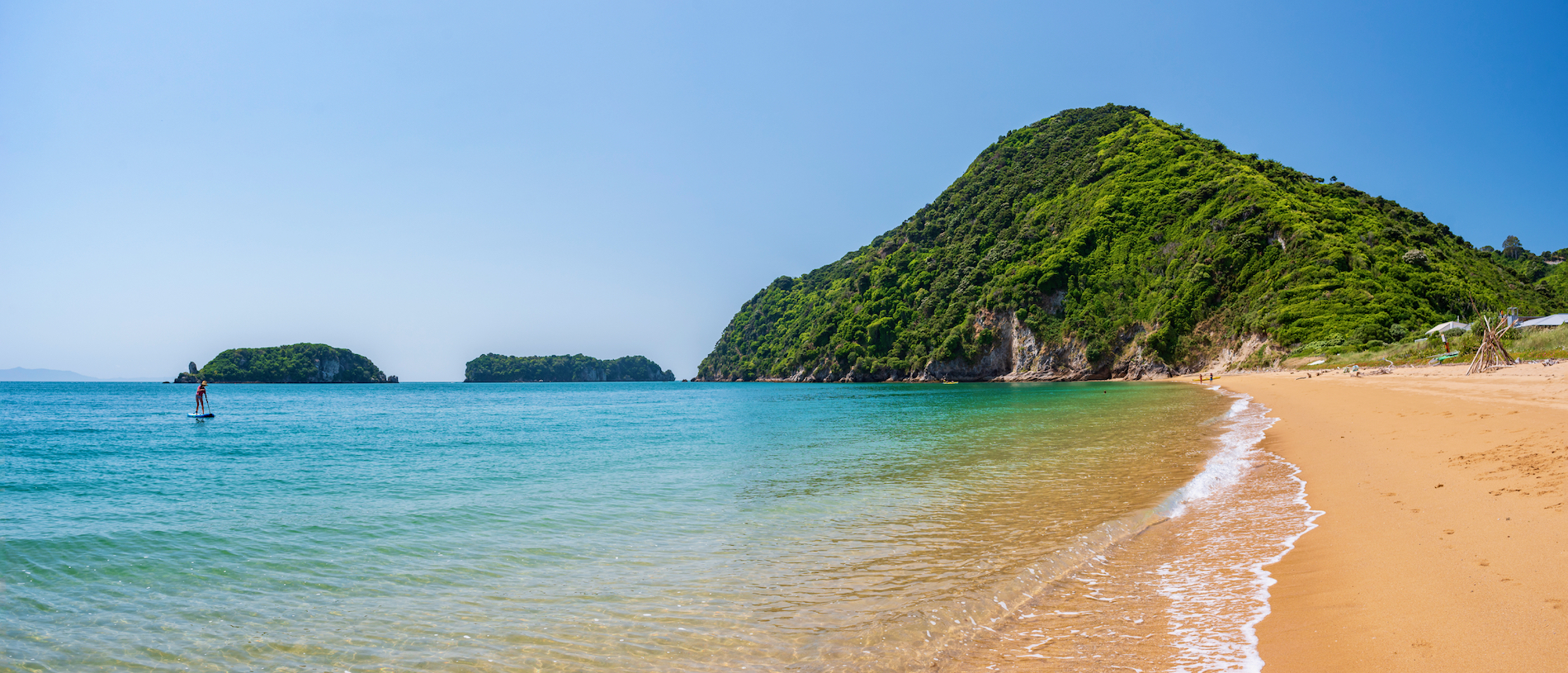
Nelson: living the good life
Tucked away at the top of the south, Nelson is a town of 50,000 people working hard at enjoying themselves.

The people of Golden Bay sometimes joke about officially seceding from the rest of New Zealand and forming their own state, and it doesn’t seem so crazy when you first ease down the twisting narrow road of Tākaka Hill.
At your first sight of the glacier-carved valley laid out below, you get the feeling this is definitely a settlement that could live happily apart – one of the last, loveliest places on Earth when all else has gone to the dogs.
Hopefully, in your journey over the hill from Nelson, you’ve already checked out Ngārua Caves for a spot of spelunking and a spectacular view over the blue curve of Tasman Bay, and pulled off the road for a three-kilometre stroll to Harwoods Hole, the deepest vertical shaft in New Zealand and the most dramatic and easily visited evidence of the chasms that riddle the core of this mountain.
With this one road in and out, the Bay is largely self-sufficient, protected by the curving needle of Farewell Spit at the northern end, and contentedly cut off from the rest of the South Island by three parks: Kahurangi, Abel Tasman, and Northwest Nelson Forest Park. Not to mention the road over the marble mountain, which has a whopping 257 corners (a local T-shirt scoffs: “It’s just a hill. Get over it”). The only other access is by tiny plane, water, or foot.
You live here, and travel here, to enjoy the isolation.
Known as Mohua in Māori, Golden Bay is thought to be one of the earliest settled places in New Zealand, and has had a string of unbecoming names. The first Europeans knew it as Murderers Bay after four of Dutch explorer Abel Janszoon Tasman’s crew were killed when a Māori waka rammed several dinghies in 1642, with one Māori shot in retaliation. French explorer Dumont d’Urville called it Massacre Bay, and after coal was discovered, it dutifully became known as Coal Bay. Finally, when miners struck gold near Collingwood, it took on the much more comely Golden Bay, which could apply to its beaches as much as to its rocky wealth.
A sun-trap and place of extreme beauty, the bay is well-known for being an arty, homespun paradise for alternative lifestylers who first began to arrive in the 1970s, dismaying the farmers; but these days you’re just as likely to see holidaying Cantabrians, wealthy urban refugees, bach owners, and expats reveling in their dream life. As you nose around, you’ll see some businesses posting a sign with a hand on it – that means they take part in the community exchange system H.A.N.D.S (How About Non Dollar System), Golden Bay’s alternative currency for more than 25 years.
In summer the population swells from 4000 to 25,000, and the streets of Tākaka brim with people, enjoying some of the most beautiful beaches in New Zealand as well as the surrounding rivers, mountains and bush. You don’t visit Golden Bay for its high-end shopping, but there’s still plenty to fill a day in town, including some truly excellent eateries; try hooking your own lunch at Anatoki Salmon just outside Tākaka, where they’ll prepare your catch hot smoked or sashimi-style.
Plenty of travelling musicians stop off to perform at Golden Bay’s watering holes, appreciating the area with the deepest reaches of their troubadour soul, and on Saturdays, visit the local market in the library carpark. Locally-made Tui Balms are available, of course – the community where they’re made is not far, at the edge of the Abel Tasman National Park – and you can stock up on your boho festival wear as well as local art and jewellery. Try the Pohutukawa Gallery in the old post office building, the Monza Gallery, Estuary Arts, and Soul by Mariposa for footwear, including vegan options. The delicate scent-filled wonderland of Living Light Candles is just outside of Tākaka, and there’s the excellent Golden Bay Organics for a huge range of local and imported organics and health food.
Outside town, Pohara is a popular destination for families, with its café, campground and ice-cream shop; stop at Village Milk on the way, where you can buy fresh raw milk direct from the farm gate. At nearby Port Tarakohe, you might be lucky enough to see nesting little blue penguins or catch a fish from the breakwater as rock-climbers scale the nearby cliffs. Continue on to Ligar Bay, Tata Beach and Wainui Bay for postcard-perfect beaches.
Get back on the road and head out to Farewell Spit – there’s only one way there, but plenty of intriguing stopovers along it, including some of the clearest water in the country at Te Waikoropupū Springs. Collingwood has a one-street town, but that only adds to its charm. It was the first place gold was discovered in New Zealand, and thanks to its proximity to saw-edged mountains, retains its frontier feel. The hamlet is peaceful and a fantastic spot for a beach walk or to spy wading birds. Grab a locally-famous Tinky’s pie at Tinky’s Tavern, or Rosy Glow chocolates from the sweet little pink-painted villa on the waterfront.
Pūponga, at the base of Farewell Spit, is the northernmost settlement in the South Island and has a campground, with nearby walks up to gold tailing areas and dramatic beaches. You can take in the view of the Spit from the café or visit the lower half yourself. But to get any further up, you’ll need to join a tourism operator.
The spit is a stopover for migratory birds, and also for pilot whales, actually the world’s largest dolphin. In fact, the dunes are pilot whale graveyards, with dozens or hundreds buried each time there’s a mass stranding, which is sadly frequent in summer. And if you have the time, do not miss the trip to nearby Wharariki Beach – this wind and sea-carved wonderland is magical and otherworldly, home to delightful baby seals.
Don’t let Golden Bay’s there-and-back location dissuade you. Isolation is its strongest point. In fact, though a road connecting Collingwood to Karamea – the ultimate tourist driving loop – has often been mooted, it’s never got off the ground, due to a thundering lack of enthusiasm from the communities at either end. A proposed road connecting the West Coast to Nelson through the Wangapeka is still on the cards, however, but that would skirt far south of the Bay – and that’s quite all right by the locals.